Coplanar system for sliding wardrobes
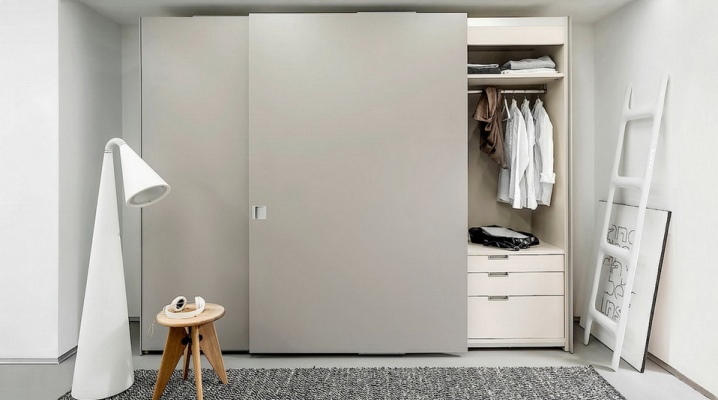
Like any other type of furniture, a home cabinet must meet a whole range of consumer qualities. In the first place among them is functionality, no less important are the ergonomic, hygienic and aesthetic requirements for the product.
Through the efforts of designers, designers and manufacturers, a new generation of this type of furniture has recently appeared on the market, which most fully meets the listed requirements, but with a name that is not the easiest for a simple buyer to understand.
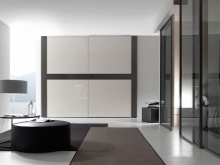

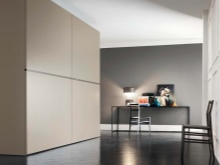
What it is?
We are talking about the term "coplanarity", which came to the sphere of furniture making from such a direction of scientific theory as vector geometry, and means the placement of vectors, and in this case - doors, sashes or canvases in one plane. More precisely, the novelty is called "sliding coplanar system for wardrobes". This class of furniture with sliding doors has long become a familiar attribute in home, office or public interiors.
As is known to the owners and users of such cabinets, their doors slide with the help of rollers along the guide rails, and in the closed position are offset relative to each other by a step. The new door opening mechanism eliminates this relative inconvenience - in the closed position, all door leaves are aligned in one plane with minimal gaps, and rollers, stops and other mechanical parts are hidden behind a fixed facade.
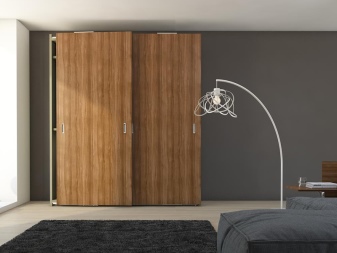
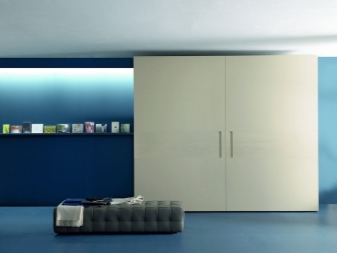
From the point of view of mechanics, there is nothing complicated here - special running brackets or levers have been added to the device, which consists of supporting and supporting rails and rollers, which allow each of the doors to move relative to the others in a parallel plane when opening, and when closed, return to the common guide for all.
The mechanism itself consists of two main parts, which are mounted on the base of the cabinet and on its lid.
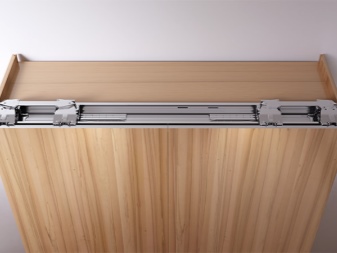
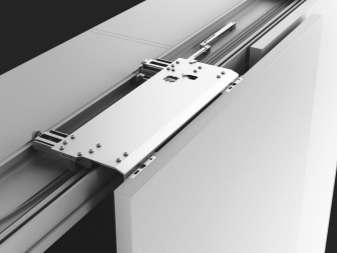
The main advantage of the coplanar mechanism as applied to wardrobes is the possibility of new design solutions, in which the presence of the cabinet can only indicate its open position. The overall aesthetics are also greatly influenced by the installation design of the mechanical part - unlike other designs, it remains completely hidden and in no way affects the appearance of the interior. The advantage is also a certain gain in internal volume - due to the design, 8-10 cm of usable space is saved for placing things.
Among other advantages of the coplanar system, several more can be noted:
- the bearing capacity of the suspended part of the system allows the installation of a sliding facade weighing up to 60 kg, which, accordingly, makes it possible to install two-door sliding wardrobes up to 3 m long, and three-door wardrobes up to 5 m long;
- based on the bearing capacity, a variety of materials can be used for the manufacture of cabinets (chipboard, MDF, solid wood, plastic, glass, mirrors) with a thickness of 16 to 60 mm;
- most coplanar mechanisms are equipped with an adjustment system for adjusting the amount of extension of the leaves and the gaps between them, damping elements, smooth finishing to the extreme position, some can be equipped with special electric drives.
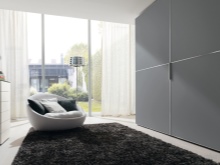
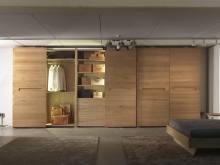
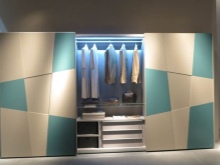
Advantages and disadvantages
Among the undoubted advantages is the ability to install the mechanism on an existing wardrobe - even on a compartment, even with swing doors. This will require the owner to make minimal alterations for the hidden mechanism of the system - the cabinet will need to be lifted onto the base, and the roof will have to be “drowned” down. The system installation instructions supplied with each product will help to understand the scope of the upgrade.
As for the shortcomings, the main one is considered to be the high cost of the kit due to its rather complex high-precision device and the quality of workmanship corresponding to it. Today sliding wardrobes with a coplanar system are considered a piece or exclusive product. As with most technical goods, this deficiency is leveled as the competitive demand expands, as well as the introduction of mass production of the product. Also among the disadvantages is the high bearing capacity of the mechanism, mentioned among the advantages - the significant weight of the facade may require additional fastening of the cabinet to the walls to fix it from skewing or "collapse".
Another minus attributed to coplanar cabinets can be considered conditional - each mechanism is designed for a specific number of canvases, right or left direction of their installation.
On the other hand, for any individual cabinet installation and assembly project, you can find a suitable mechanism that matches the design.
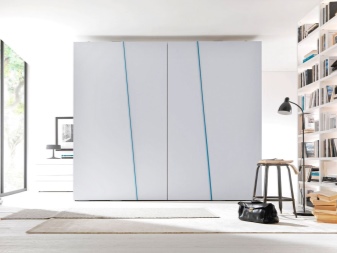
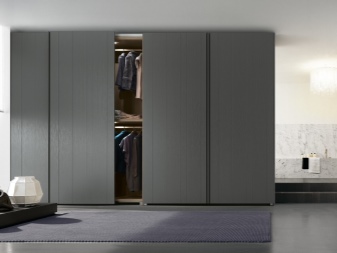
For which rooms is it suitable?
As an element of the home interior, sliding wardrobes with a coplanar closing system have a wider range of applications compared to their counterparts. Still, they tried to place his predecessors away from the gaze of guests - in the bedroom, at most in the hallway, but not in the living room.
The new generation is ready to take its rightful place in any corner of the house, to use all the available, but not used, space opportunities, to turn purely household furniture into a link in the decoration of the home.
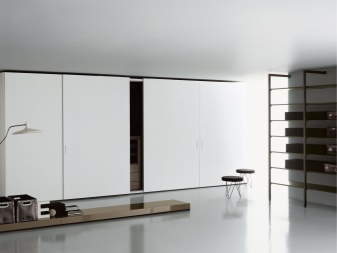
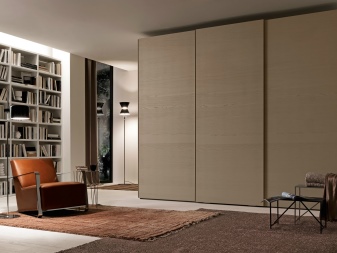
Manufacturers
So far, the range of coplanar sliding systems on the furniture fittings market is not very large, as is the list of manufacturers of these devices. Basically, this segment is dominated by manufacturers from Italy (Cinetto, Barnini Oseo) and Austria (Hetechi). The assortment of their products is designed for furniture of almost any overall dimensions for standard or individual planning of residential and office premises - from 330 cm to 5 m in length, 30 to 80 cm in width.
The main consumers of mechanisms are factories and workshops for the manufacture of furniture, both domestic and foreign. In their catalogs, you can find both ready-made models of sliding wardrobes, and proposals for manufacturing according to an individual project or order.
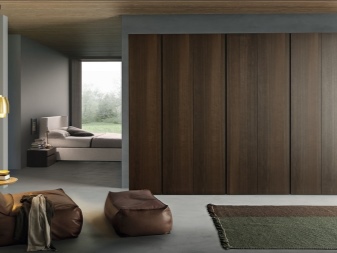
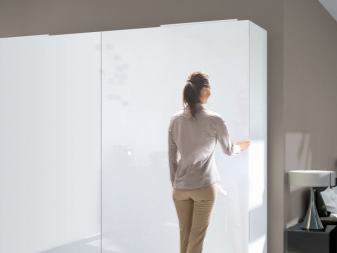













The comment was sent successfully.